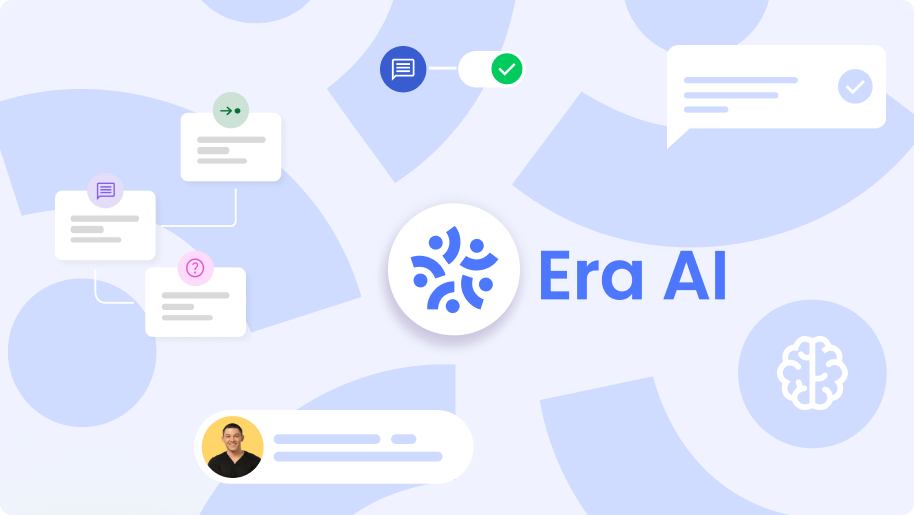Customer Journey Analytics. The size of the global market of customer journey analytics (CJA) is expected to increase from USD 8.3 to 25.1 billion by 2026. A number of factors including the need for a seamless consumer experience, better engagement, and the desired business outcomes will drive the need for more journey analytics insights.

Being able to identify the pain points in the customer journey, reduce costs, and understand clients’ behavior better allows business owners to boost sales and ensure that all their efforts are not in vain.
CJA will help you to leverage the analysis, review, and improvement of many business processes. What exactly? Let’s find out in this article.
Customer journey analytics value and importance
The whole process of tracking and analyzing how users interact with your product (brand) is called customer journey analytics. Everything from looking at channels customers choose to communicate with the company and identifying how they move within them to finding valuable touchpoints and often occurred issues people face during this process.
With such analytics, businesses can:
- Track each step in customer journeys
- Find ways to improve their experience with the brand
- Increase revenues and decrease operational costs
- Identify areas where people drop, and eliminate them
The more detailed brands can dive into the customer journey, the better the outcome.
Customer journey analytics VS Journey mapping
Apart from customer journey analytics, there also exists journey mapping. How do they differ?

We identified CJA above. Journey mapping is a visual example of the way customers interact with the brand (or rather how you want customers to interact with it). Implementing journey mapping covers customer journeys on a micro-level, taking a few people as an example, without diving into details and deep statistics of thousands of unique consumers.
In order to understand the difference between the two, look at them through the results they bring:
- Journey mapping can show a simple observation about a limited amount of consumers or present an interpretation that is not supported by analytics. Customer journey analytics, in turn, is fully driven by data and brings a complete picture of customer emotions and interactions with the brand.
- Journey mapping provides a single piece of information about a certain period while analytics gives data in real-time. You are able to see how customer behavior changes in a timeline: how customers interacted with the brand before, and how they feel about it now.
- Journey mapping does not have the needed data to conduct testing in a fast and efficient way. Customer journey analytics allows us to track all the new improvements in real-time and see how people respond.
- Journey mapping gives predictions about consumer experience issues while CJA proves them with data. The latter reveals the pain points where clients churn or get stuck and helps brands to action accordingly.
- Journey mapping works best for internal communication while actionable journey analytics is great for analyzing external customer experience and improving it.
While journey mapping has certain benefits, it does not provide brands with a complete picture of consumer journeys.
To understand why people leave on a certain step of their interaction with your company, you cannot just assume based on a static journey mapping snapshot. You need to get real-time data provided by customer journey analytics.
Customer journey analytics VS Traditional analytics
Same as journey mapping lacks deeper insights into consumer behavior, traditional analytics loses to customer journey analytics due to the inability to efficiently process large data volumes.

There are several reasons to choose journey analytics over traditional one:
- Large data volumes. There are now so many touchpoints that customers might have with a brand: websites, forums, social media channels, sites with reviews, etc. All the data received should be gathered and thoroughly analyzed. Unfortunately, a lot of companies either ignore to review all the data or simply fail to manage it due to the lack of time and resources.
- Time-consuming data integration. In order to extract all the received data and integrate it, companies need weeks if not months. With a fast-paced digital environment, no one has so much time to wait. Same as BigQuery integrations help you to quickly import and analyze your data from a number of different resources in one place, customer journey analytics saves time and enables real-time fast integration.
- Required skills shortage. Integrating data is one thing, but analyzing it is a completely different story. In traditional analytics, businesses need to hire people who are familiar with programming languages and are able to manipulate large volumes of data. Not only do they need time to analyze data but will most probably be unable to extract all the information without losing certain details.
- The gap between action and analysis. While customer journey analytics helps you cover all the channels people use to interact with the brand and act upon them in the most efficient way, traditional analytics will not be able to cover all the channels at once. Your brand will be covering customer concerns in one channel but constantly losing clients in another due to the inability to address their problems on time.
Customer journey analytics, unlike traditional ones, is able to analyze billions of consumer interactions across multiple channels for you to create a complete picture of the way people build relationships with your brand.
6 big impacts of customer journey analytics on your business
From above, it’s clear that CJA impacts the business significantly. Using CJA, you can improve the following 6 areas. Let’s have a closer look at them
Boosting customer acquisition
Utilizing customer journey analytics makes it easier not only to acquire new clients on board but also to encourage them to stay with you.
CJA gives you valuable insights into the best time to communicate and the most convenient marketing channels for reaching new customers.
Improving consumer experience
Journey analytics is a great way to assess CX initiatives and understand how successful and impactful they are in terms of existing metrics. You can evaluate consumer journeys, track preferences in users’ communication, measure churn rates and other CX metrics, and more.
The detailed analysis of all these points is an opportunity for you to comprehend how customers feel about your product and fix weak spots in your customer experience.
Saving costs
With the help of journey analytics, you can reorganize your approaches to user onboarding and journeys. It will assist you in lowering reprioritizing efforts and decreasing operational costs.
When you know what are top product features (best selling items or plans), effective onboarding tactics for your clients, time and effort of your team, other customer triggers and preferences, you can adjust the process by deprioritizing some initiatives, adding more resources to other projects, and putting on hold some activities. To make such decisions, CJA insights will come in handy.
Optimizing customer lifetime value
Journey analytics enables you to dive deep into statistics and build efficient strategies for increasing the value of your existing clients. When analyzing CLV based on journey analytics, you can:
- collect thorough data on CLV
- evaluate CX of some customer segments
- choose the best path for their retention
- think of acquisition tactics
Refining customer retention
Retaining clients is always cheaper than gaining new ones. Journey analytics does the job when it comes to predicting consumer behavior/their preferences, and identifying ways to reduce churn and improve retention.
By reaching out to clients at-risk on time, you are able to make them stay before they decide to leave and move to competitors.
Decrease customer support overload
CJA, by showing you weak spots in consumer experience with the brand, can help you eliminate them and decrease the customer support overload via various channels: support emailing, chatting, inbound call centers, technical support inquiries, etc.
When people have fewer things to complain about or fewer situations that confuse them, using your product, they will have no need to contact support for help. Brands are already using journey analytics to introduce IVR, AI chatbots, for example, Whatsapp Business.
Also, you can choose better communication channels for some customer segments. Overall, CJA insights help you to optimize your customer support processes.
Wrap up
With constantly changing trends and customer preferences, you don’t have all the time in the world to create a solid business strategy that will work for you for the next 10 years.
You need to utilize all the existing digital tools to analyze CX in real-time, track their behavior, and act immediately, tweaking your strategy every now and then. While old analytical tools do not work to their fullest, customer journey analytics will help you with that.




















